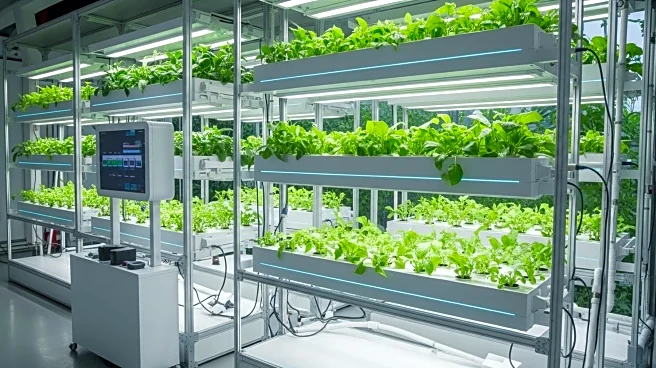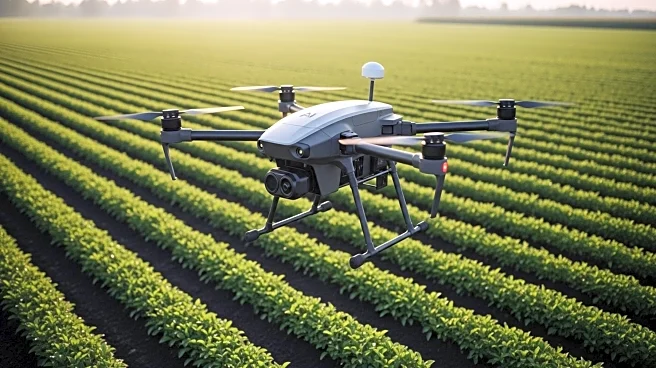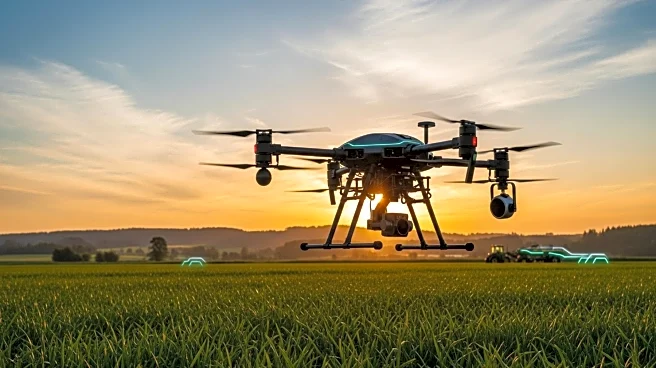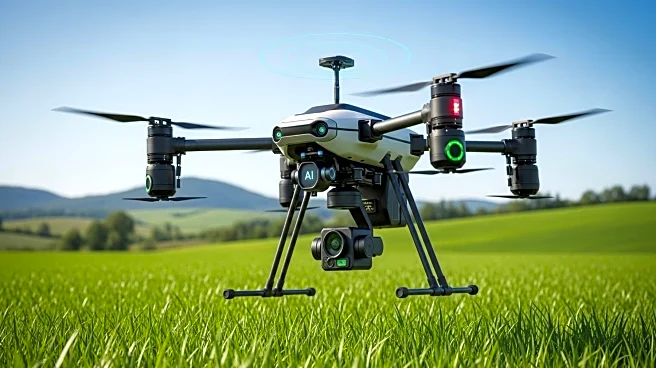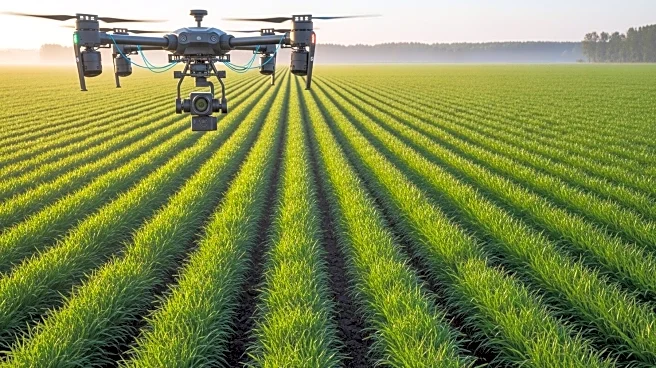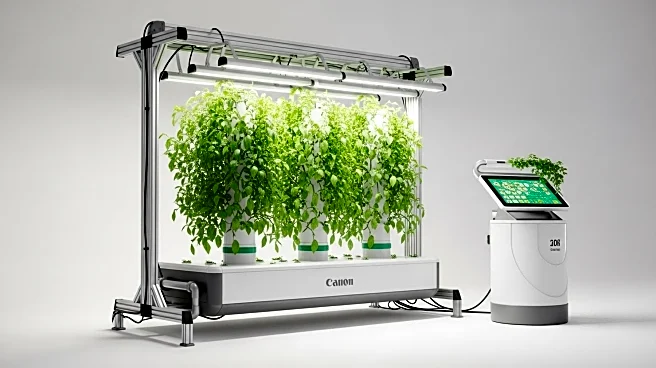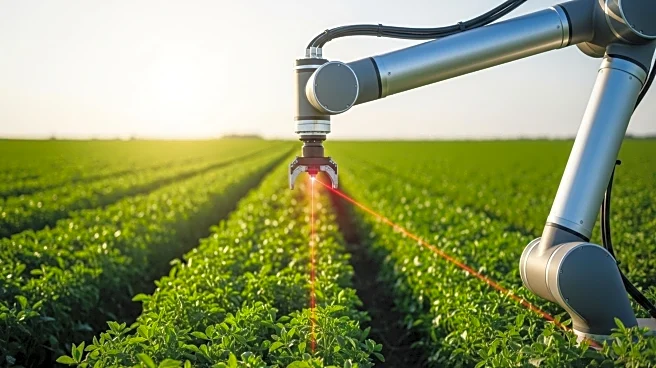What's Happening?
The global agricultural robots market is anticipated to grow significantly, reaching USD 98.64 billion by 2032, with a compound annual growth rate (CAGR) of 25.3% from 2025 to 2032. This growth is driven by the integration of robotics, artificial intelligence (AI), and Internet of Things (IoT) technologies into agriculture, which are revolutionizing farming practices worldwide. The increasing demand for food and the decreasing availability of arable land are pushing farmers and agribusinesses to adopt autonomous machinery, drones, and robotic arms. These technologies are used in various agricultural processes such as soil management, harvesting, fertilization, and pest control, enhancing accuracy, efficiency, and sustainability. North America currently leads the market, with the United States being a major adopter of advanced agricultural technologies, including drones and milking robots.
Why It's Important?
The expansion of the agricultural robots market is crucial for addressing global food security challenges. As the world population grows, the demand for food increases, necessitating more efficient and sustainable farming practices. The adoption of robotics and AI in agriculture can significantly improve productivity and reduce labor costs, which is particularly important in regions facing labor shortages. Additionally, these technologies enable precision farming, which minimizes waste and optimizes resource use, contributing to environmental sustainability. The market growth also presents opportunities for technological innovation and economic development, particularly in regions like Asia-Pacific, which is expected to experience the fastest growth due to investments in automation and smart farming initiatives.
What's Next?
As the agricultural robots market continues to expand, further advancements in AI and IoT technologies are expected to enhance the capabilities of these systems. The reduction in costs of sensors and imaging devices will likely make these technologies more accessible to small and medium-sized farms, broadening their adoption. Governments and industry stakeholders are likely to continue investing in research and development to improve the efficiency and affordability of agricultural robots. Additionally, as more regions adopt these technologies, there may be increased collaboration between countries to share best practices and innovations in smart farming.
Beyond the Headlines
The rise of agricultural robots also raises important ethical and social considerations. The increased automation of farming could lead to job displacement for agricultural workers, necessitating policies and programs to support workforce transition and retraining. Moreover, the reliance on technology in agriculture may raise concerns about data privacy and security, as well as the potential for increased corporate control over farming practices. Addressing these issues will be essential to ensure that the benefits of agricultural robotics are equitably distributed and that the transition to automated farming is socially responsible.

